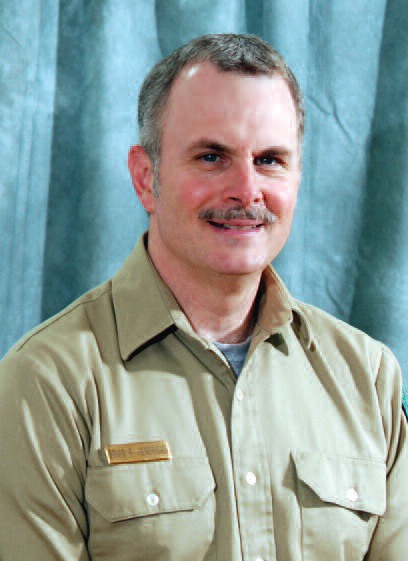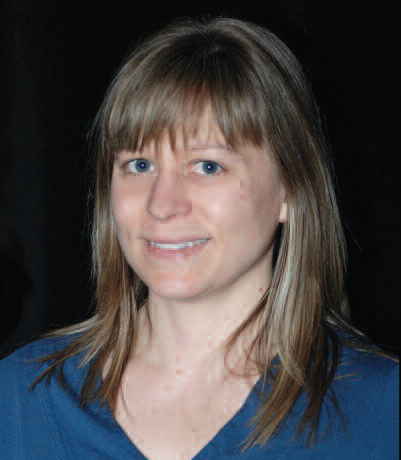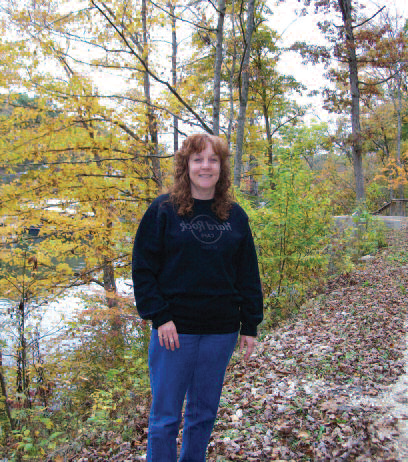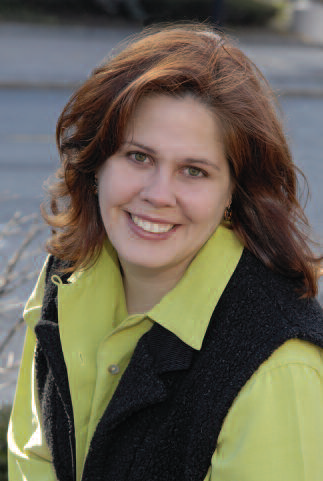Big tree state coordinators ensure that champions get the recognition they deserve.
by Sarah McVicar
As we mark the 70th anniversary of the National Register of Big Trees this spring, we would like to call special attention to the dedicated network of Big Tree State Coordinators who make it possible. State coordinators verify nominations for the National Register, and provide invaluable advice and feedback to the national program. We recently began profiling coordinators in our monthly e-newsletter, Forestbytes. Here is a larger sampling of these incredible people and the unique programs they coordinate in each of their states.
BRIAN HENDRICKS, ALABAMA
Alabama Champion Tree Coordinator Brian Hendricks wanted to be a forester since the 8th grade. Hendricks grew up in the small community of Carthage, Illinois, where he fondly remembers fishing, going for walks in nearby woods and identifying trees with his dad. “I was fascinated by the different species,” he recalls.
Today, as state coordinator, Hendricks has devoted hard work and patience to rejuvenating Alabama’s Champion Tree program. In addition to his regular duties overseeing Alabama’s Forest Inventory & Analysis program, he took over the Champion Tree program in 2007. Hendricks – with the assistance of Auburn University Professor Lisa Samuelson – was charged with establishing a new list of eligible species, as new guidelines mandated that only naturalized or native Alabama trees be considered. Hendricks was pleased to find a positive reaction to this change, despite many lost spots on the state champion list.
Hendricks is a strong believer in public participation. “The nominators are the most important people,” Hendricks says. “We wouldn’t know about a tree if it weren’t for them.” Most of the state’s nominations come from the public, he points out; in fact, many nominated trees are actually discovered in people’s yards.
To celebrate the nominators, when a new champion is found Hendricks sends out a formal letter recognizing owner and nominator, and provides a marker for the nominator to place at the base of the tree; the marker is often presented in a public ceremony. Because much of the state is rural, Hendricks says, the ceremonies often get local media involved and become an important way to bring communities together.
In the future, Hendricks expects that Alabama’s popular Champion Tree program will only get bigger. “We just have a lot of interest. Often owners who aren’t even aware of the program initially become very excited when they discover they have a Champion Tree on their property.” One of his favorite things, Hendricks says, is hearing that excitement in people’s voices. “It’s something they’re proud and happy about,” Hendricks says. “And they should be.”
DON BERTOLETTE, ALASKA
Son of teacher parents who turned him on to the environment, he says, before the term was commonplace, Alaska Big Tree Coordinator Don Bertolette is a lifelong forester. Recently retired from more than 30 years with federal land management agencies – filling positions in such fields as forest engineering, resources inventory, and watershed management – and holding several forestry degrees, Don is also the co-founder of the Western Native Tree Society.
Even for someone with Bertolette’s experience, though, the role of Alaska Big Tree Coordinator is no easy job. At over 586,000 square miles, Alaska is by far the nation’s largest state: Territorial waters included, Alaska is larger than California, Texas and Montana combined. It covers a vast range of climate stretching from wet, temperate rainforests to boreal forests and regions of such bitter cold that it is impossible for trees to grow. Very few roads provide access to this vast territory, which means that hunting down Big Trees presents a unique challenge and can require the use of plane, snowmobile or dogsled.
Luckily, Bertolette has approached the role with determination, and is hard at work cultivating a vital network of foresters across the state. He also continues to advocate for greater consistency and accuracy in documenting champions. These biggest trees, he feels, should not be considered primarily for their economic value, but for their scientific value to geneticists and researchers, who require consistent, accurate measurements of the capabilities of various species.
For the future, Bertolette also hopes to put more effort into outreach, including connecting with local schools, offering more resources online, and helping teach the public about measuring trees. “You can’t underestimate the educational function,” Bertolette says of the program. He himself is learning as well. While he says he still feels comparatively new to the area, he has enjoyed the opportunity to gain a better sense of Alaska’s trees.
Overall, Bertolette believes the Big Trees program is an excellent forum for helping people appreciate the role – spiritual, economic, social or biological – that trees plat within society. “We encourage participation in all facets,” Bertolette says.
JENNIFER TEEGARDEN, MINNESOTA
In her first full year as Minnesota Big Tree Coordinator, Jennifer Teegarden has made a big impression. When Teegarden took on the job, she was relatively new to the Division of Forestry and the state’s Big Tree Register. And since the register had been essentially inactive since 2005, she had a lot of catching up to do. Nevertheless, Teegarden found the time to get the register back on track, and even update the state program to coincide with the national program so that these Minnesota champions could receive national recognition. Her success can likely be attributed to her high energy, efficiency and dedication. “When I have a job to do, I’m going to give it my all,” she says.
In coming years, Teegarden looks forward to getting familiar with each of the trees on Minnesota’s register throughout the state’s four biomes, which, she notes, includes regions from rare pockets of old growth forest to mosquito-infested swamps and other remote and difficult-to-access areas.
In the meantime, this former public school teacher is working to appeal to a younger generation. Teegarden seeks out ways to make the Register increasingly interactive and fun. One example is her idea of putting on a Big Tree Hunting Geocache, a high-tech treasure hunt where participants would use GPS to locate hidden geocache containers. In addition, Teegarden hopes to work more closely with Minnesota’s roughly 100 School Forests, where teachers and students use an outdoor classroom to study core subjects like math, science and art.
Though her job and the publicity that comes with it can sometimes be nerve-wracking, Teegarden says her teaching experience – she would sometimes present to over 300 teenagers – helps her keep her cool. At the end of the day she is happy to have returned to her girlhood interest in the environment– especially forestry.
“I really love trees,” she says. “When I go out and see a magnificent specimen I get excited, and I just hope to be able to share this excitement with others.”
DONNA BALDWIN, MISSOURI
Donna Baldwin began at the Missouri Department of Conservation over 15 years ago, but her interest in the outdoors dates back even further. A Missouri native, Baldwin grew up in a heavily wooded region on the Lake of the Ozarks, where she recalls spending most of her time outdoors.
Since assuming the role of Big Tree Coordinator, Baldwin has come to see that one of her main challenges is overcoming her lack of forestry experience. “I rely heavily on the guidance of professional foresters in my state,” she says. While she depends on her well-developed team of 85 foresters, Baldwin enjoys an occasional trip to the field for the chance to see the state champions up close, and takes pride in Missouri’s several national champions.
And, forestry background or not, Baldwin has already accomplished a great deal in her short time with the Register. She has started collecting digital pictures of all newly crowned champions so that in the future Missouri can have an interactive, more digitized Register similar to the National Register compiled by American Forests.
In addition, Baldwin is working to update all printed and electronic forms of Missouri’s measuring guidelines to bring them in line with the guidelines used in the National Register. The Redbud tree is one case in point: She explains that the difference in the way forked trees are measured may mean that what ranks as a national champion with American Forests may not be a champion at all in Missouri. Baldwin wants to eliminate such confusion for the public, and make the register as easy, comprehensive and accessible as possible.
After all, what she enjoys most about her job is the opportunity to make a difference – to stimulate people and see their excitement when they nominate a tree or discover a champion. “The landowners, the public, the foresters – they all get such a kick out of it,” she says.
GLORIA VAN DUYNE, NEW YORK
Before becoming New York’s Big Tree Coordinator, Gloria Van Duyne enjoyed a career that led her from New England and then across the globe to Australia, where she volunteered for a bird-banding group.
“You never know where things may take you,” she says. In fact, she was a computer science major in undergrad school before realizing she wanted to work more closely with people.
Today Van Duyne pursues her interest in conservation at New York’s Department of Environmental Conservation, where among her many other jobs she coordinates the state’s Big Tree program. While she holds the title of coordinator, Van Duyne is quick to point to the program’s collaborative nature. “It’s really a team effort. Just as a forest is made up of many trees, the success of our program depends on the many people who contribute to it.” For example, she says she relies on the work of Environmental Education Assistant Carol Pawelek (the “true engine behind the program”), the foresters across the state with the training and ability to track down Big Trees, and, of course, the nominators.
“If it weren’t for the public – meaning people interested in trees – we wouldn’t have the register,” Van Duyne says. Some New York big tree hunters, like Landis Arboretum Arborist Fred Breglia, have nominated many champions over several years. The public’s interest in the program is especially pleasing to Van Duyne, who sees what a difference it can make for those who participate. “For some people it just takes one particular tree to get them interested and involved in the community and community forestry,” she says.
Despite the difficulty caused by shrinking staff in state agencies, especially in the lands and forests divisions, Van Duyne believes the New York State Register is in its best shape in years. “I’m just happy that the program can be run as it deserves,” she says. New York’s Register is certainly an example of teamwork paying off.
This article was published in the Spring 2010 issue of American Forests magazine.




